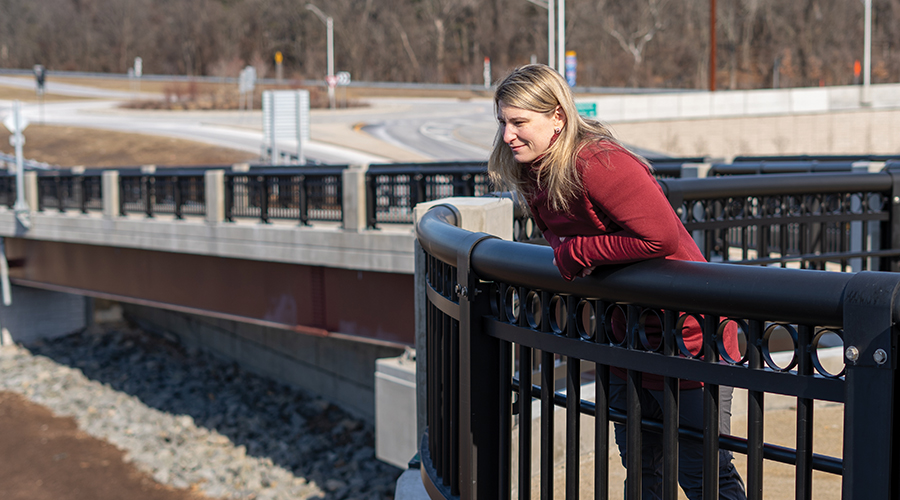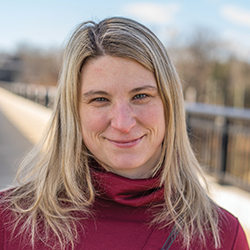
Becky Lyne (Master of Environmental Studies `10) always knew she wanted to work for the environment. She graduated from college with a degree in ecology and went to work with Michael Baker International, where she supported government clients by identifying environmental resources and understanding regulations in regard to project sites in wetlands and floodplains. But while her work allowed her to get hands-on and make an impact, she knew that a master’s degree would give her more opportunities and a broader knowledge base. Becky continued working full time when she enrolled in Penn’s Master of Environmental Studies (MES). “I saw this credential as an opportunity to advance my career, and I thought this program would help round out my environmental studies background,” she says. “The MES program offers a lot for anybody who’s really interested in environmental studies, whether you are looking to fill technical gaps like I was, or you’re interested in policy and nonprofits.”

“When I got into the program, I wasn’t exactly sure what kind of classes I wanted to take,” Becky continues. “I wound up gravitating to classes that I didn’t already have a strong background in.” With her education and experience in environmental biology, Becky opted to take classes in aqueous chemistry, hydrology, and geoengineering. The geoscience and technology courses have helped Becky understand and communicate with her colleagues on complex projects; for example, building a bridge across water entails conversations with engineers that specialize in drainage and hydraulics as well as ecologists with an environmental biology background like Becky. “We can understand each other and come up with solutions together,” she says.
Becky was established in her career when she attended the program, yet valued opportunities in the program to make professional connections. “There are all sorts of people in the program, folks right out of undergrad and also people who are already in their professions or changing professions,” she says. “So if you spend time talking to your classmates, you can meet all sorts of people who will help you with your career.” And vice versa: After taking a hydrology course that was supported by a teaching assistant, Becky recommended the teaching assistant for a job within her company. “It was great to meet someone so smart and interesting and reliable in the program, and then help them get their job and see them succeed,” she recalls. Becky also took advantage of the program’s research connections, such as an independent study she pursued with the Stroud Water Research Center tracking nutrients in the Murderkill Estuary in Delaware. “You do have access to very smart and talented research scientists,” she says.
Now Director of Quality Management and Senior Environmental Technical Manager for the Northeast at Michael Baker, Becky assists client agencies—particularly government transportation agencies—as they go through the regulatory process at state, local, and federal levels. “In New Jersey—and probably everywhere else—we’re wrestling with the idea of climate change, and increases in precipitation intensity and frequency,” she explains. “What’s being discussed right now in our industry is how can we plan for our public assets to recognize and acknowledge climate change, while spending public money wisely.” For example, she is currently working on a project in New Jersey near the Delaware Bay, where extreme rain events or even just a particularly high tide can cause flooding that impacts road transportation. Options to mitigate the flooding range from raising the ground and building a seawall, which can fragment the wetlands ecosystem and harm plant and animal life, to upgrading the drainage and pump system, which may be less costly but may not rectify the flooding issues. “There are a lot of tradeoffs as you protect the environment and adapt to climate change while improving and replacing infrastructure,” she says.
Still, navigating those trade-offs is exactly what makes her feel good about her work. She recounts the complicated problem posed by a bridge between New Jersey and Pennsylvania, where construction was constrained by timing and noise requirements in order to avoid disrupting the habitats of sturgeon, red-bellied turtles, and nesting peregrine falcons. “Those are the challenges I like most about my job,” she says. “There is obviously a public need for bridges. Everyone recognizes that the project needs to occur, so how are we going to solve this so we meet all the rules and everybody’s needs?”





